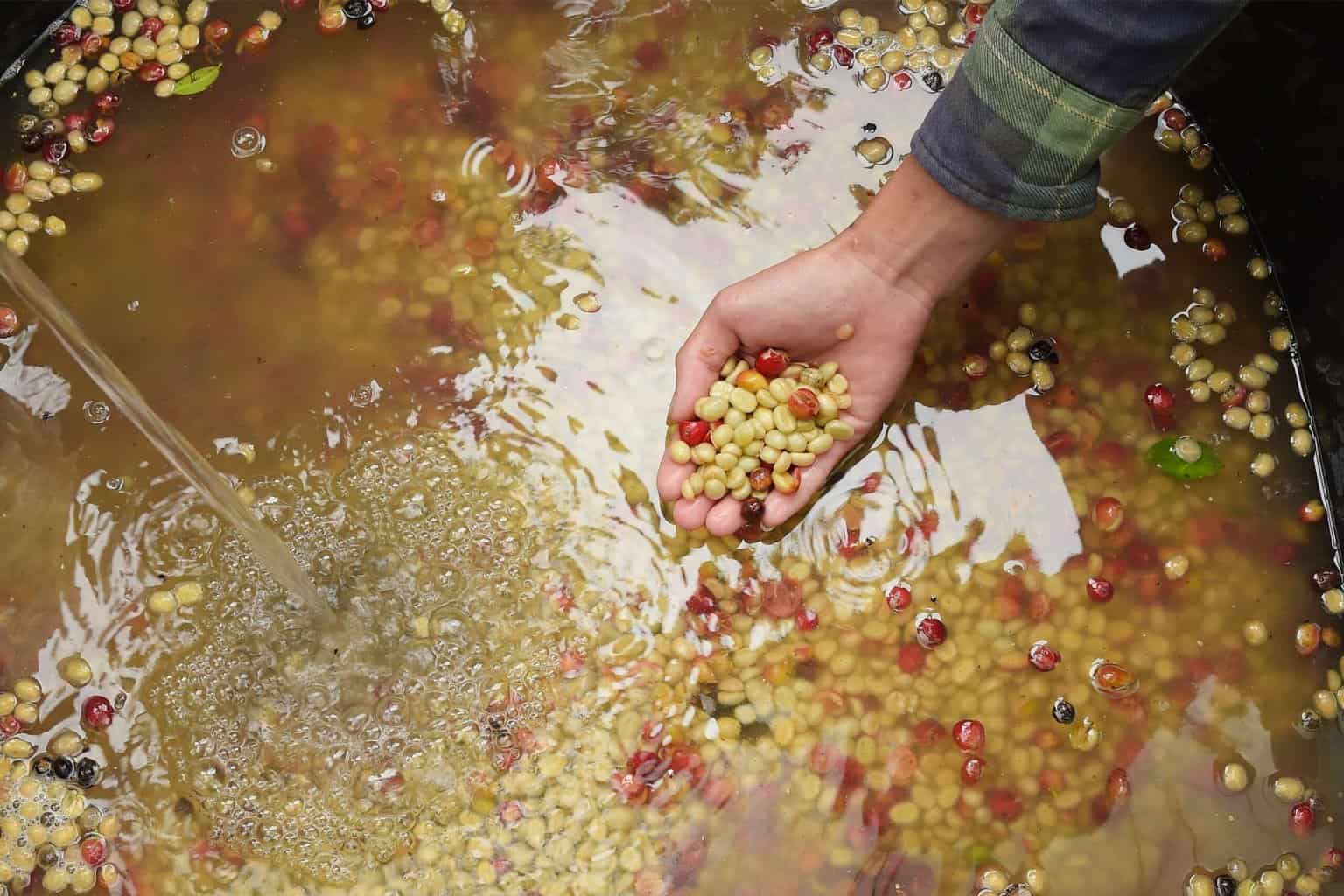Last Updated on December 9, 2023
Fermented coffee has piqued the interest of coffee enthusiasts and health-conscious people alike. This unique method of processing coffee beans involves the use of microorganisms such as yeast and bacteria to break down complex compounds within the beans.
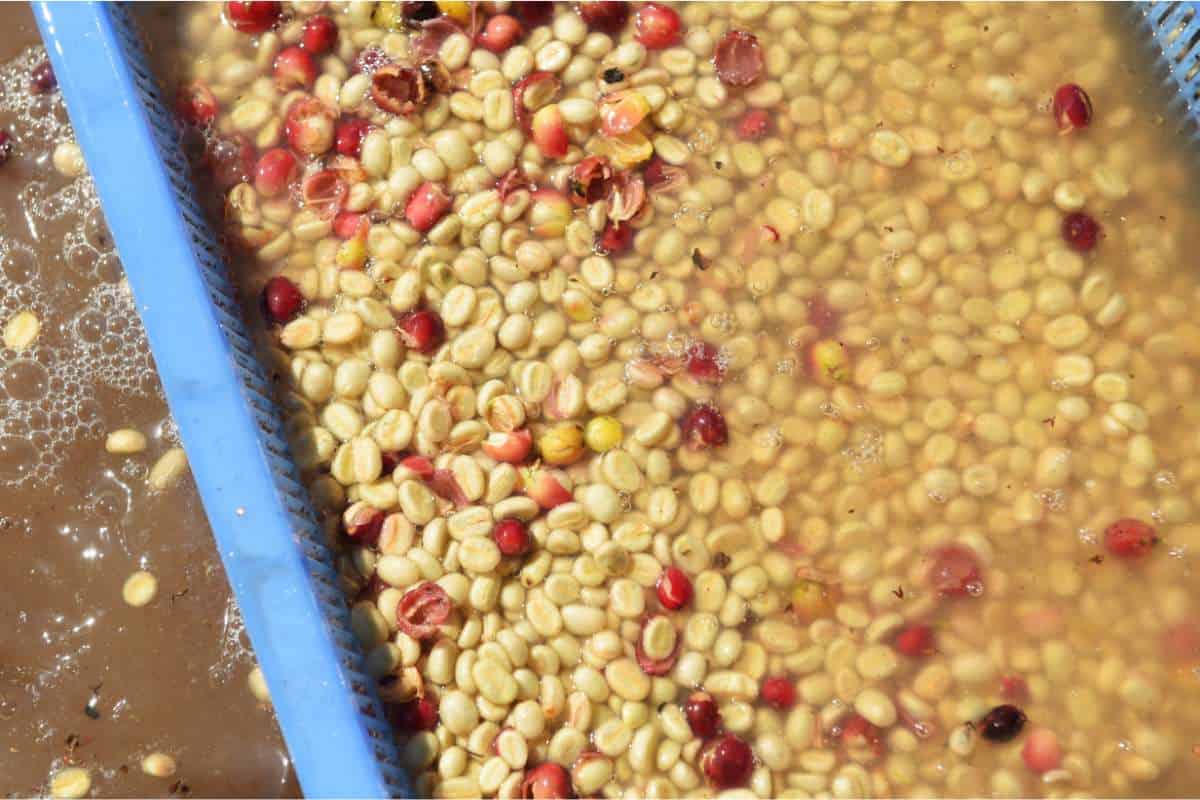
Chemically, the process isn’t that different to what happens in wine and beer making, although I wouldn’t say it produces a similar product.
With an array of potential health benefits, fermented coffee is gaining popularity.
And for the coffee nut, one of the most intriguing aspects of fermented coffee is its distinctive flavors. The fermentation process often imparts a deeper, more complex taste to your cup of coffee, while also reducing acidity. So it’s a delicious option for coffee lovers but can also be more gentle on those with sensitive stomachs.
Fermented Coffee Overview
Through the natural process of fermentation, coffee cherries—and more importantly, the beans within them that we eventually roast and brew—can gain unique flavors and characteristics.
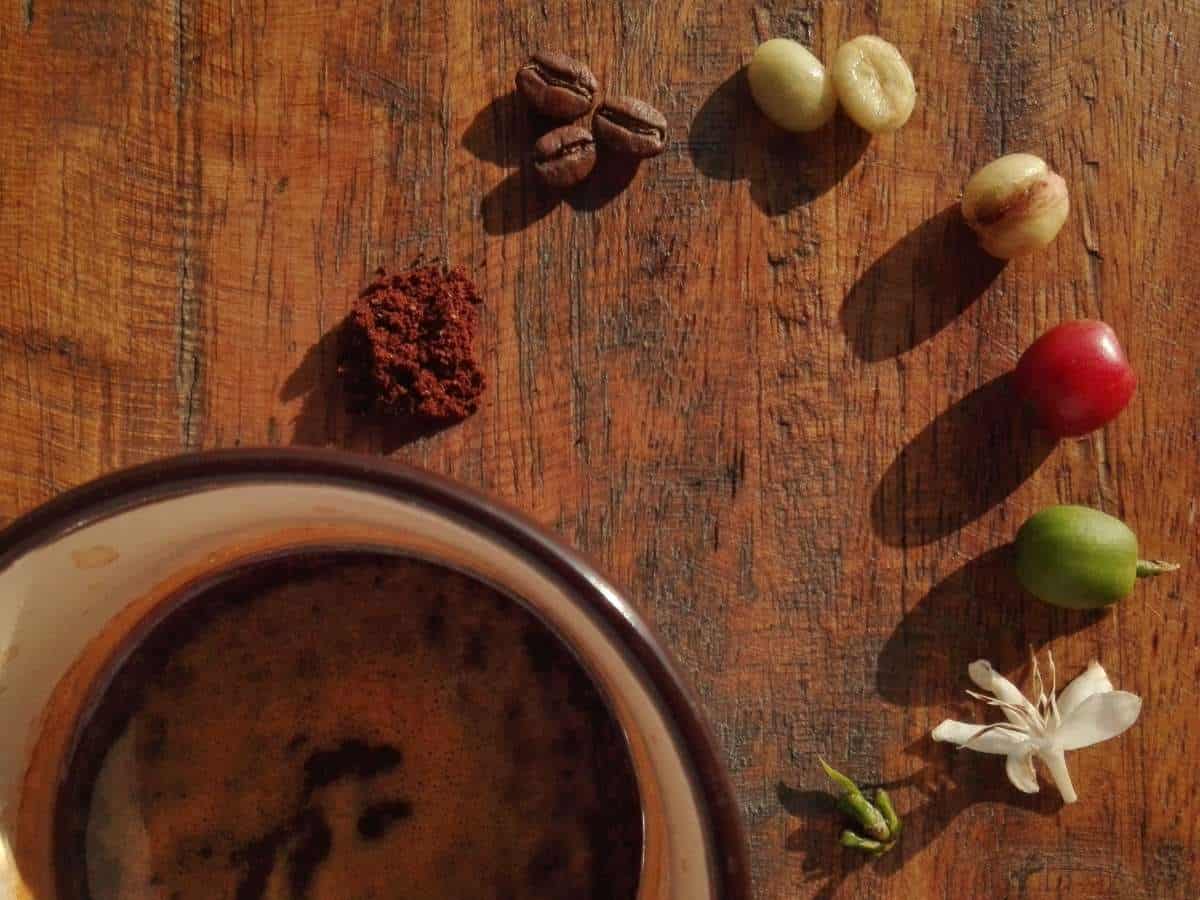
Fermentation involves the natural breakdown of starches and sugars into simpler molecules. In the context of coffee, this occurs during the fermentation of ripe coffee cherries. This is the fruit of the coffee plant that contains seeds we know as coffee beans.
As with beer and wine, yeast and bacteria play crucial roles in the coffee fermentation process, consuming the sugars and producing flavorful byproducts.
Coffee farmers and processors use different methods to control the fermentation. These methods depend on factors such as temperature, pH, and the water content of the coffee fruit. By controlling the environment to enhance the natural occurrence of specific microorganisms, coffee producers can achieve the flavor profiles they want and improve the final quality of the beans.
Coffee Fermentation Processes
Coffee is traditionally processed in one of two ways:
- Natural processing (aka dry processing)
- Wet processing (aka washed processing)
Both natural and wet processing involve some fermentation, but there is more fermentation in natural processing, which I’ll explain in a moment.
Lately, however, another processing method has taken hold among specialty coffee producers. It creates the most fermentation, so let’s start with that one.
Anaerobic Fermentation of Coffee Beans
Anaerobic fermentation of coffee beans is a process in which coffee beans are intentionally fermented in an oxygen-free environment, not unlike wine or beer. It is sometimes referred to as cultured coffee.
During this process, the beans are placed in sealed containers with controlled temperature, humidity, and carbon dioxide levels. Microorganisms naturally present on the coffee beans consume the sugars and other compounds in the beans, producing various organic acids and other flavor compounds that influence the taste and aroma of the coffee.
The anaerobic fermentation process can create unique and complex flavor profiles, and has become a popular technique among specialty coffee producers in recent years.
The flavor most strongly associated with anaerobic fermentation? Raspberry! The American Chemical Society conducted a study in which tasters overwhelmingly identified raspberry flavor notes in anaerobically fermented coffee.

When selecting fermented coffee beans, keep in mind that the flavors can range widely, just like with wine and beer. Some may exhibit fruity, floral notes, while others might have earthy, bold tastes.
Natural Processing
In the natural process of coffee fermentation (also known as dry processing), coffee cherries are allowed to dry in the sun. This takes anywhere from two to four weeks, during which time the cherries are turned regularly to ensure even drying. As the cherries dry, the sugars and enzymes within the fruit break down, promoting the growth of microorganisms that contribute to fermentation.
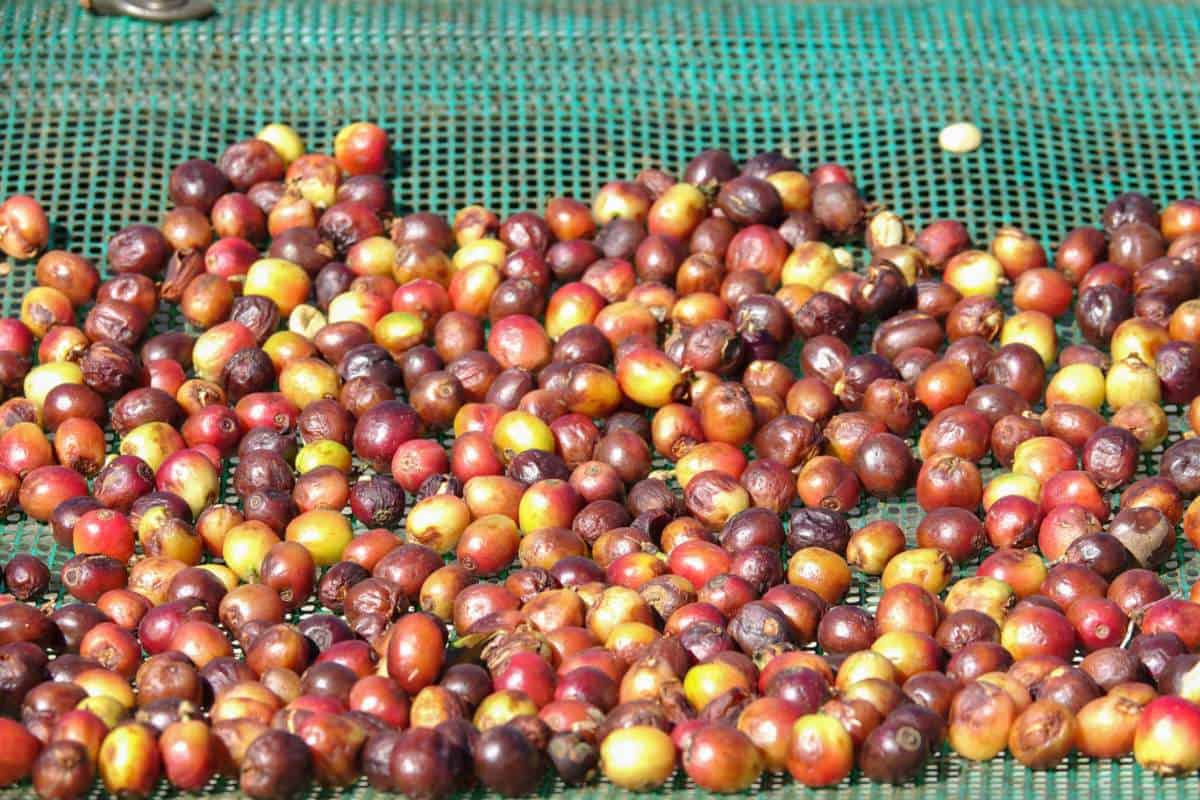
Only after they have dried and all that fermentation has taken place is the fruit then removed.
Throughout the natural process, it is vital to monitor the time and temperature to avoid over-fermentation or spoilage. Subtle changes in these factors can significantly impact the resulting coffee’s flavor and quality.
Wet Processing
Wet processing (or washed processing) is more common. In the wet process of coffee fermentation, coffee cherries are first de-pulped. Most of the fruit’s flesh is removed before the cherries are submerged in water. Here, water plays a crucial role in the fermentation process.
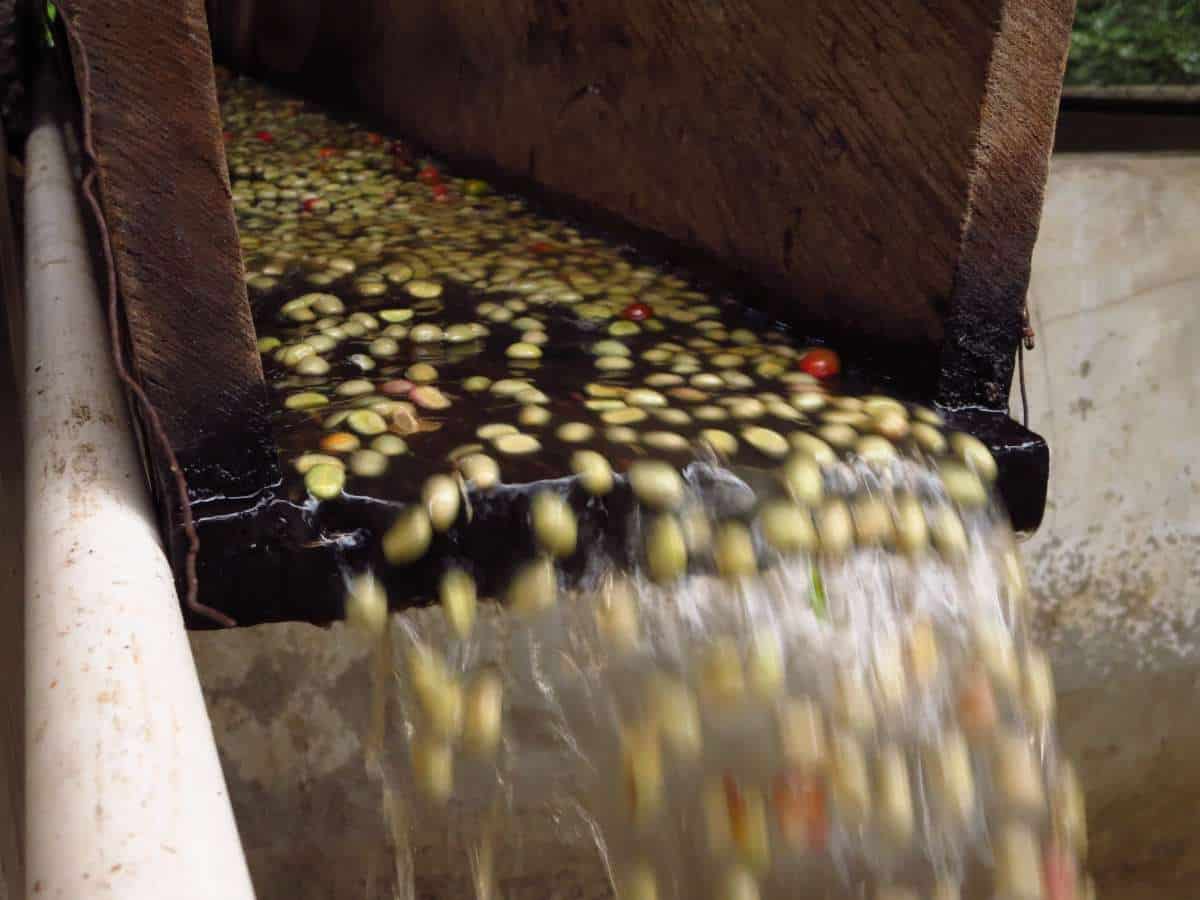
What’s left on the cherry seeds after the pulp is removed is known as the mucilage layer. It’s a coating of mucous that usually binds the fruit to the seed. During washed processing, microorganisms break down the remaining sugars in the mucilage layer. Enzymes are activated and produce byproducts such as carbon dioxide.
The fermentation time in the washed process typically ranges from 12-72 hours, depending on temperature and other factors. It is essential to continually monitor the progress of the beans in water, as over-fermentation can lead to off-flavors and a reduction in coffee quality.
Once the desired fermentation level is achieved, the coffee beans are washed more thoroughly, usually using a series of water channels, to remove any remaining mucilage. Then they’re dried.
Both natural and washed processes involve the interaction of water, enzymes, microorganisms, and sugars, shaping the final coffee product’s flavors and characteristics.
Fermented Coffee Taste Profile
The first time I tried natural-process fermented coffee, I was quite taken aback. It tasted funky! By funky, I mean it had a musty, earthy flavor that almost seemed like something was off. I learned from the coffee experts I was with that this is exactly what they’re looking for.
You may have tasted a hint of this flavor in certain wines. There are red wines that connoisseurs will describe as funky. It’s a similar kind of taste. It’s an acquired taste but once you get used to it, then coffees without it actually seem a little uninteresting.
Acidity and Sweetness
Fermented coffee offers a balance between acidity and sweetness. As coffee cherries go through the fermentation process, enzymes break down complex sugars into simpler substances, enhancing the coffee’s sweetness. The resulting brew offers a smoother and less acidic cup, providing a more enjoyable experience for your palate.
Aromas and Flavors
Exploring the aromas and flavors found in fermented coffee, you will notice a variety of fruity and floral notes. The chemical changes occurring during fermentation contribute to the development of complex and unique flavor profiles. The raspberry-tasting coffees mentioned above are a great example of how these coffees can stand out from traditional coffees.
The intricate and delicate relationship between coffee fermentation and flavor is what adds these distinguishing characteristics:
- Fruity notes: Fermented coffee may exhibit various fruit flavors, such as berries, tropical fruits, or citrus, depending on the fermentation process and coffee origin.
- Floral notes: Some floral undertones, like jasmine or honeysuckle, can be perceived in fermented coffee, adding to its complexity.
- Body: The fermentation process can lead to a heavier body or mouthfeel, giving the coffee a more full, satisfying experience.
- Tannins: The presence of tannins in fermented coffee may give it a slightly dry, yet well-rounded feeling.
Be prepared to encounter a diverse range of aromas and flavors, and remember that the outcome of fermentation will be different for every type of bean. The roasting process adds another layer that will influence what you taste in your cup.
Understanding and appreciating these nuances will elevate your coffee experience and expand your palate.
Types of Fermented Coffee
Cultured Coffee
Cultured coffee uses specific strains of bacteria and yeast to ferment the beans in an environment without oxygen. In this case, natural fermentation processes have been harnessed to enhance the complex flavor profiles of select Arabica beans. By controlling the fermentation process, coffee producers aim to unlock the full potential of each bean, creating vibrant fruity and floral notes.
Barrel-Aged Coffee
For a unique twist on fermentation, barrel-aged coffee is created by aging green coffee beans in whiskey or rum barrels. This method infuses the beans with subtle flavors and nuances of the spirits, striking a delicate balance between the coffee and liquor notes. By maturing the beans in a controlled environment, roasters achieve a refined end product that might captivate the senses of both coffee and whiskey enthusiasts.
Kopi Luwak (Civet Coffee)
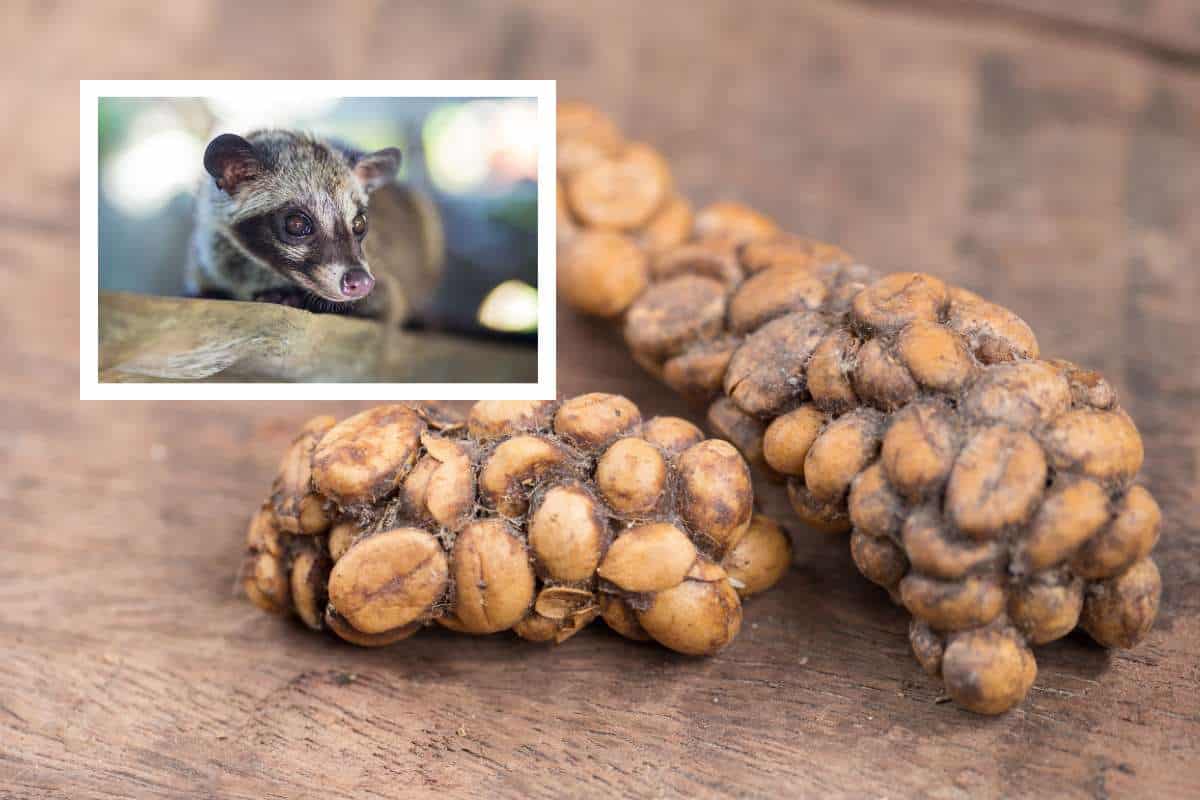
Kopi Luwak, often referred to as “civet coffee” or “cat poop coffee,” is a fermented coffee that is not processed in the traditional sense. Instead, the beans are eaten by a civet, a small mammal found in Southeast Asia, and eventually passed through its digestive system. During this process, fermentation occurs within the animal’s gut, which then imparts unique flavors to the beans.
Kombucha Coffee
Kombucha coffee has nothing to do with fermenting coffee beans. You make this innovative beverage by fermenting coffee after it has been brewed. It is made by combining brewed coffee with a SCOBY (symbiotic culture of bacteria and yeast) which ferments the coffee, adding probiotics and unique flavors to the mix. The resulting coffee kombucha offers a distinct taste and potential health benefits from the probiotics.
Health Benefits and Digestibility
Probiotics and Prebiotics
Fermented coffee has gained attention for its potential health benefits, primarily in the form of probiotics and prebiotics. Probiotics are live bacteria that promote gut health, while prebiotics are fibers that serve as food for these beneficial bacteria. By incorporating fermented coffee into your diet, you could enhance your gut health and enjoy the benefits that come with a well-balanced digestive system.
Reduced Gastrointestinal Discomfort
Another advantage of fermented coffee is its low acidity. Traditional coffee can cause gastrointestinal discomfort and heartburn for some people due to its high acidity. Fermentation breaks down starches and other components in the coffee beans, resulting in a lower acidity level. This makes fermented coffee a more suitable option for those who experience digestive issues when consuming regular coffee.
To ensure the best results from fermented coffee, it’s essential to give your body time to adjust to this new source of probiotics. Doing so can help minimize potential side effects, such as bloating or gas.
Brewing Techniques
When you brew fermented coffee, you can try various techniques that will bring out its unique flavors and aromas. The most popular methods are pour-over, AeroPress, and regular drip coffee. Let’s take a closer look at each.
Pour-over
Pour-over brewing is great way to explore the depth and complexity of fermented coffee. To brew with the pour-over method, you’ll need a pour-over dripper, a gooseneck kettle, and a coffee filter.
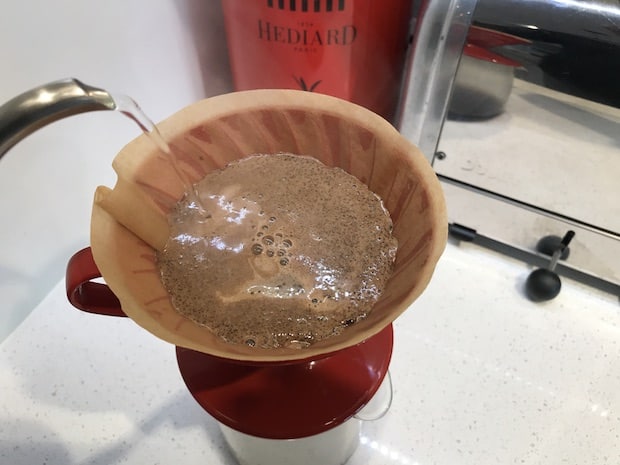
Begin by placing the dripper on top of your cup and insert the coffee filter into the dripper. Measure out your desired amount of coffee grounds and place them in the filter. Slowly pour hot water in a circular motion over the grounds, allowing them to fully saturate and bloom before gradually adding more water until you have the right ratio of coffee to water (I like 1:17).
AeroPress

For those who prefer a more hands-on brewing experience, the AeroPress is an excellent choice. To brew with an AeroPress, you’ll need the AeroPress device, a disc filter, and some finely ground coffee. Place a filter paper on the filter cap and twist it onto the chamber. Place the chamber on top of your mug and add one scoop of coffee grounds, then pour water up to the “1” mark of the chamber. Stir for 10 seconds, insert the plunger, and press slowly. This method uses immersion brewing and pressure, extracting bold flavors and a rich, full-bodied cup of fermented coffee.
Drip Coffee
Finally, if you prefer a more traditional approach you can use a coffee filter with an automatic drip coffee maker. Simply measure out the desired amount of coffee grounds and place them in the filter basket, following the manufacturer’s guidelines for water-to-coffee ratios. Select your preferred brewing settings and let the coffee maker do the hard work for you.
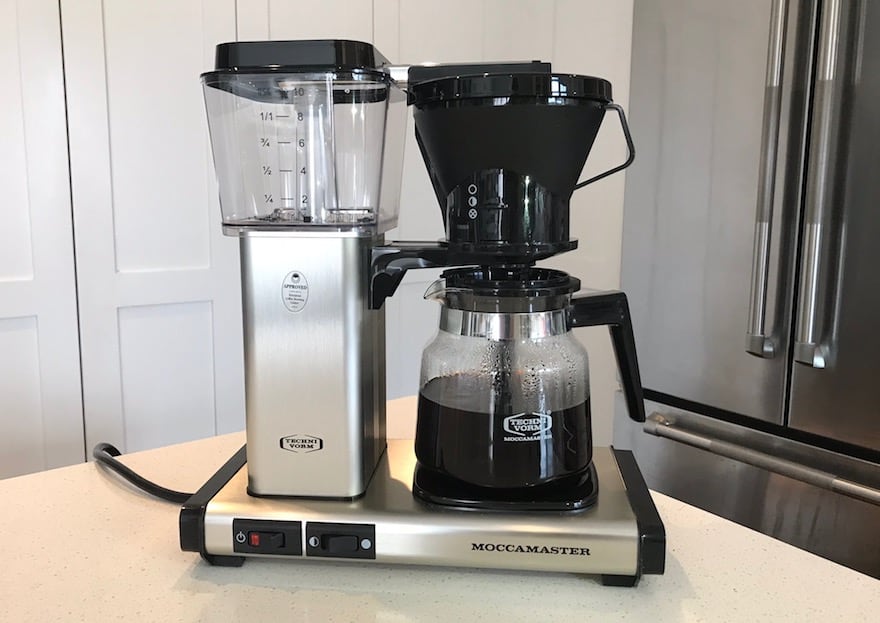
While this method may not provide as much control as pour-over or AeroPress, it can still yield a delightful cup of fermented coffee when done correctly.
No matter which brewing technique you choose, try experimenting with different parameters such as grind size, water temperature, and brewing time to find the perfect balance and extraction for your palate.
Coffee Fermentation in Different Regions
In various regions of the coffee belt, coffee fermentation plays a significant role in determining how your coffee tastes. When farmers harvest coffee cherries, they usually de-pulp them to remove the outer husk. The remaining beans, enveloped in a moist mucilage, undergo a fermentation process that varies depending on regional practices and microclimate conditions.
In regions like India, known for its coffee production, wet processing is preferred for fermentation. Wet processing involves shorter fermentation times, which means the population of microbes responsible for breaking down the sugars in the mucilage is smaller. This leads to a distinct flavor profile in the green coffee beans. Wet processing is generally considered a safer method for maintaining the beans’ quality and shelf life because unwanted bacteria are more easily controlled in this environment.
A region’s microclimate can have a big impact on coffee fermentation. Higher altitudes and cooler temperatures often lead to slower fermentation times, which enhances the flavor development. Conversely, warmer and more humid environments can accelerate the fermentation process, potentially leading to over-fermentation or spoilage.
Another factor that makes coffee-rowing regions distinct from each other is the choice of microbial cultures used during fermentation. Some farmers utilize wild yeasts and bacteria native to their area, while others introduce specific strains of microbes known to produce desirable flavors, such as Saccharomyces cerevisiae and Torulaspora delbrueckii.
The impact of these variations on coffee flavor highlights the importance of understanding and implementing suitable fermentation processes for each region. This ultimately contributes to the rich diversity of tastes we enjoy in our coffee.
Coffee Fermentation FAQ
What is the process of coffee fermentation?
Coffee fermentation occurs after the cherries are picked. Fermentation can be either aerobic, which means it occurs with oxygen, or anaerobic, which occurs without oxygen. The process is driven by yeast and bacteria, which metabolize compounds in the beans and produce by-products such as acids and ethanol (source).
Does fermented coffee taste different?
Yes, fermented coffee has a distinct taste profile compared to non-fermented coffee. The fermentation process alters the flavors and aromas of the coffee, revealing unique and subtle notes that can include fruity, earthy, or wine-like characteristics (source). The flavor differences are largely due to the type and duration of fermentation, as well as the specific beans and environmental conditions.
What are the health benefits of fermented coffee?
While further research is needed, some studies suggest that fermented coffee may offer benefits such as improved digestibility and reduced stomach irritation compared to regular coffee. The fermentation process may break down compounds that can cause discomfort for some coffee drinkers (source).
How does fermentation affect coffee quality?
Fermentation can impact coffee quality in various ways, such as enhancing its flavor, aroma, and body. Different fermentation methods can produce unique taste profiles, creating a more complex and enjoyable coffee experience. However, improper fermentation can also result in off-flavors and diminished coffee quality (source).
Are there any potential risks of consuming fermented coffee?
There are currently no known significant risks associated with consuming fermented coffee. However, as with any food or beverage, it’s essential to ensure proper processing and storage to avoid spoilage or contamination (source).

